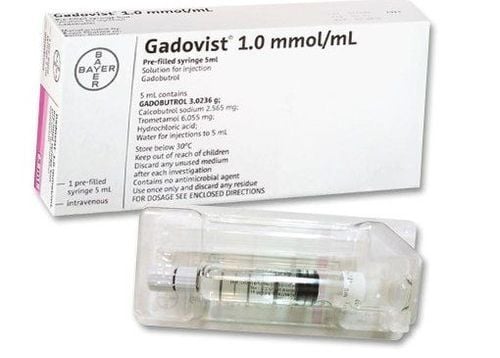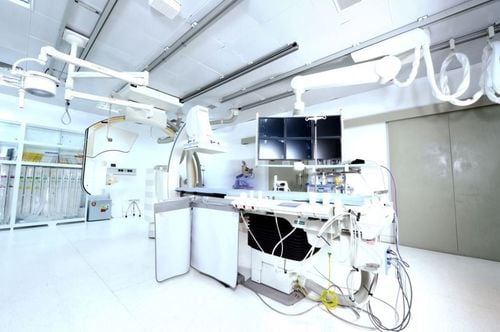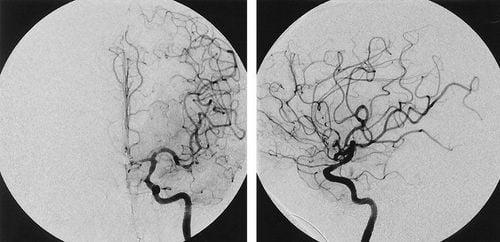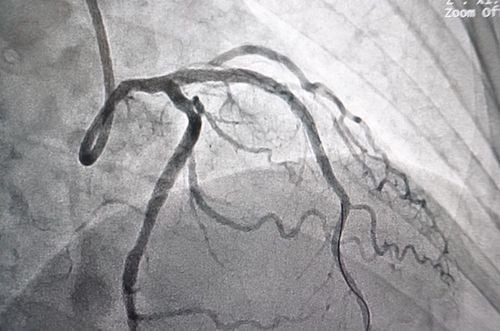This is an automatically translated article.
This article was professionally consulted by a Doctor of Radiology, Department of Radiology - Vinmec Central Park International General Hospital.The carotid arteries are one of two circulatory systems that supply blood to the brain. When the carotid artery is narrowed or blocked, it causes symptoms such as cerebral ischemia. There are many different causes of narrowing or blocking such as trauma to the arteries or atherosclerosis. At that time, the patient will be dilated and placed a carotid stent for treatment.
1. What is dilation and stenting?
Angioplasty and stent insertion is used to treat carotid artery disease. Angioplasty uses a small sausage-shaped balloon to stretch an artery and improve blood flow. A stent is a small metal cylinder that acts as a small scaffold to keep the artery open permanently. Angioplasty is a procedure performed with the help of digital background angiography (English name is Digital Subtraction Angiography and abbreviated as DSA), a special type of X-ray used to take pictures of the vascular system. in the body.
The procedure begins with a carotid angiogram and is done through a puncture of the skin into the blood vessels that feed the narrowed or diseased vessels. Usually, your doctor will insert the device from a vein in your groin or, more rarely, in your upper arm, if you can't use a vein in your groin.
Then, the doctor will inject contrast material into the artery to help show the blood vessels on the X-ray image more clearly and sharper. Without contrast injection, blood vessels will not be clearly visible on digital background angiography. When the doctor has a live image of the carotid artery on the electronic screen, the doctor will begin to perform carotid angioplasty and stenting.

Bệnh động mạch cảnh có thể áp dụng phương pháp điều trị là Nong và đặt stent
2. What is background erasing digital angiography?
Digital subtraction angiography (DSA) is a fluorescence technique widely used in interventional radiology to create images of blood vessels and other structures such as bone that would not be shown on imaging. digital images, thus allowing accurate depiction of blood vessels.
Digital background erasure angiography provides images of blood vessels in the brain to detect blood flow problems. Your doctor will insert a small catheter into an artery in your leg and guide it up to the blood vessels in your brain. Then, the patient is injected with contrast dye through the catheter and used X-rays to image the blood vessels in the brain.
Currently, digital background erasing angiography is widely applied in clinical practice because it has been proven to be more effective than other techniques. Digital background erasure angiography is commonly used in:
Aneurysm repair Angioplasty Arterial stenting Endovascular embolization Thromb removal.
3. Risks of angioplasty and arterial stenting
The following are some possible risks when a patient has to have carotid angioplasty and stenting:
Bleeding/bruising at the insertion site (about 3-5% of cases). This can be a problem that requires further treatment to stop bleeding or even repair a wound in the vessel wall, which is known as a pseudoaneurysm. The pseudoaneurysm at the puncture site will be palpable and look like a tumor that stays there for several days to weeks after the angioplasty is over. The treated artery is blocked, causing the symptoms to get worse for a short time. The artery may close completely in about 1% of cases. Allergic reaction to the contrast used in digital background erasure angiography. Most of the reactions are mild, and serious reactions are rare. CKD. This complication can occur if the patient has diabetes or chronic kidney dysfunction, and especially if adequate precautions are not taken before using the contrast medium. You will assess your kidney function with a blood test prior to the procedure to see if you need to take preventive steps. Allergic reaction to sedatives or any other medications used.
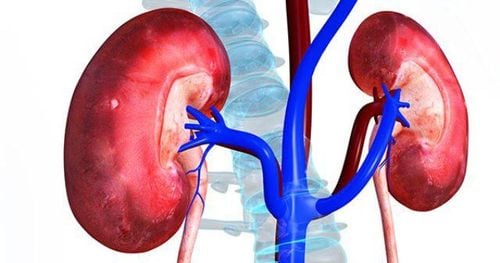
Đối với bệnh nhân mắc tiểu đường hoặc rối loạn chức năng thận có thể gặp rủi ro mắc suy thận khi điều trị bằng phương pháp nong và stent động mạch cảnh
Vinmec International General Hospital with a system of modern facilities, medical equipment and a team of experts and doctors with many years of experience in medical examination and treatment, patients can rest assured to visit. examination and treatment at the Hospital.
Please dial HOTLINE for more information or register for an appointment HERE. Download MyVinmec app to make appointments faster and to manage your bookings easily.
SEE ALSO:Applications of digital background angiography (DSA) in the neurological field Applications of digital background angiography (DSA) in cardiology Advantages of DSA background angiography




